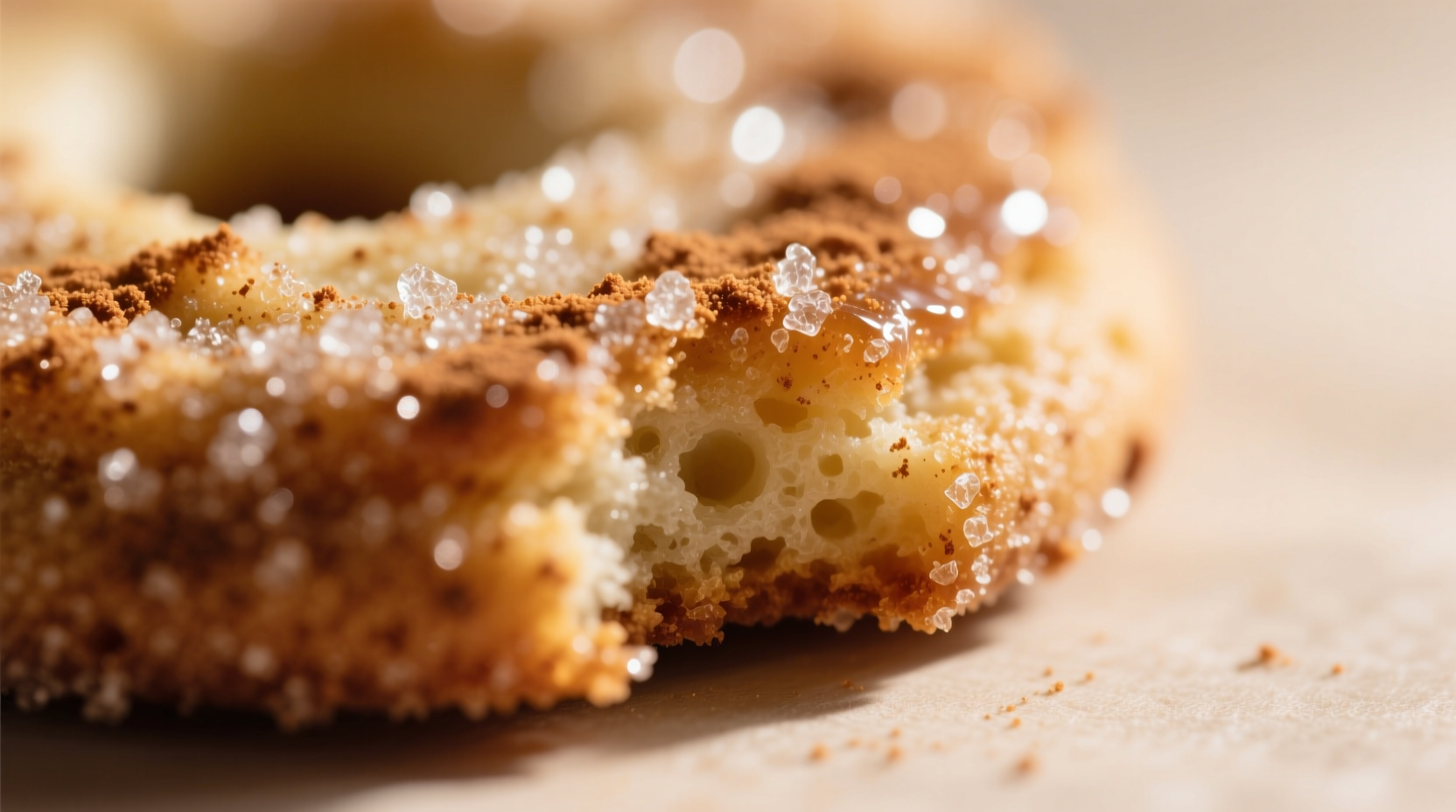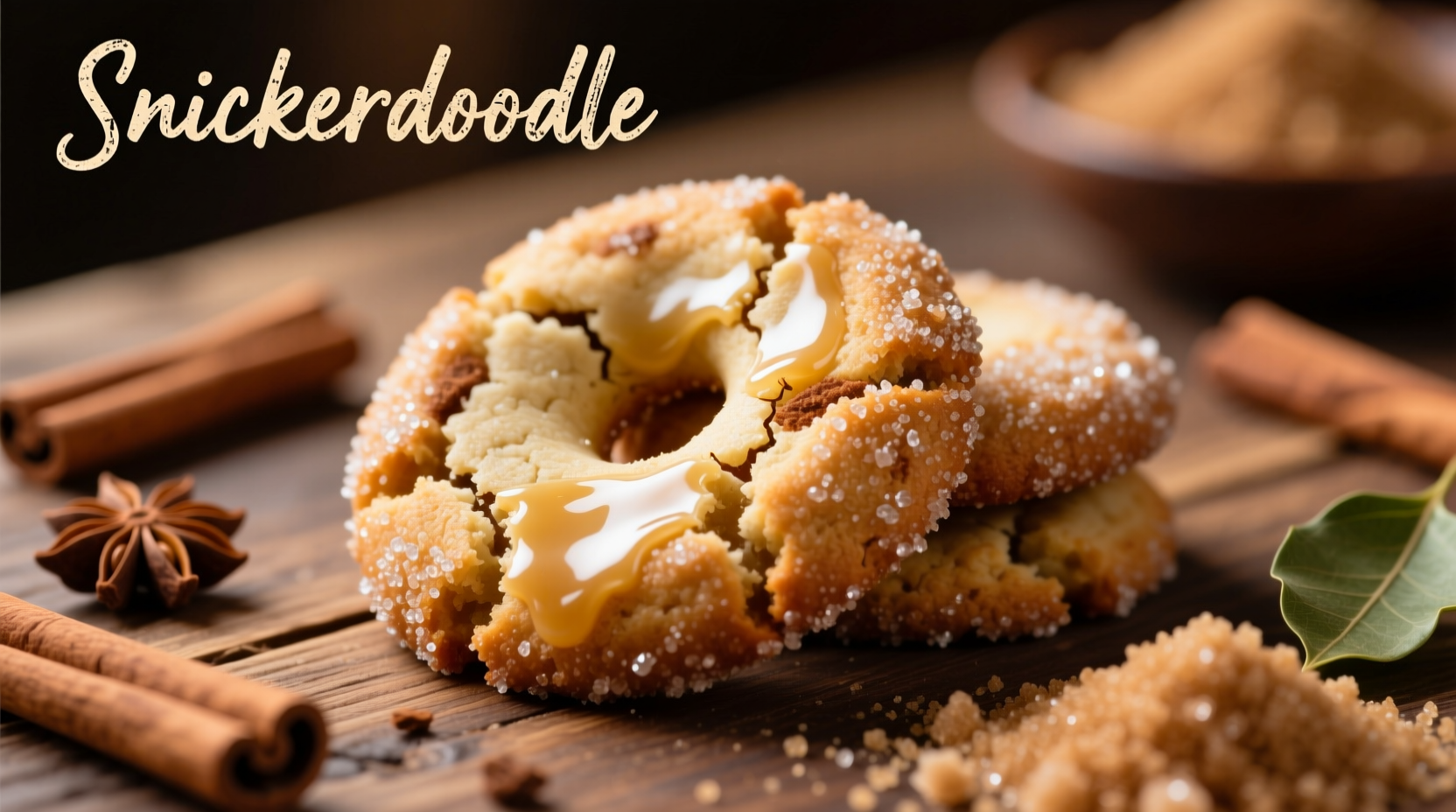When you bite into a classic snickerdoodle, you're experiencing one of America's most beloved cookie traditions. Despite common misconceptions, snickerdoodles don't contain a mysterious "snickerdoodle flavor" extract. Instead, their signature taste emerges from carefully balanced components that create a uniquely satisfying profile.
The Core Flavor Architecture
Understanding snickerdoodle flavor requires examining both the cookie base and its iconic coating. Unlike many flavored cookies that rely on extracts or artificial flavorings, snickerdoodles achieve their distinctive character through simple, natural ingredients working in concert.
| Flavor Component | Contribution to Overall Profile | Traditional Proportion |
|---|---|---|
| Cinnamon-Sugar Coating | Warm spice, aromatic sweetness | 2:1 sugar to cinnamon ratio |
| Cream of Tartar | Subtle tang that balances sweetness | 1.5 tsp per dozen cookies |
| Butter Base | Rich mouthfeel, carries flavors | Standard cookie butter ratio |
| Vanilla Extract | Background complexity, depth | 1 tsp per dozen cookies |
Why It's Not Just "Cinnamon Cookie"
Many assume snickerdoodles are simply cinnamon cookies, but the cream of tartar creates a crucial flavor dimension that distinguishes them from basic cinnamon-sugar treats. This acidic ingredient—traditionally used in German baking—reacts with baking soda to create carbon dioxide while imparting a delicate sour note that prevents the cookie from becoming cloyingly sweet.
Food scientists at the University of California, Davis have documented how cream of tartar's tartaric acid interacts with other ingredients to create complex flavor compounds during baking. This chemical reaction produces subtle flavor nuances that transform a simple sugar cookie into something uniquely satisfying.
Historical Flavor Evolution
Snickerdoodles emerged from German-Dutch baking traditions in the late 19th century, originally called "snipdoodles" or "snickerdoodles" in Pennsylvania Dutch communities. The name likely derives from the German "schneckennudel" (snail noodle), referring to the cookie's rolled shape rather than its flavor.
Early recipes relied on what baking historian Jan Longone documented as "pearlash" (potassium carbonate) before cream of tartar became widely available. This historical ingredient shift significantly altered the flavor profile, creating the distinctive tang we associate with modern snickerdoodles.
Flavor Perception Across Different Palates
Sensory analysis reveals interesting variations in how people experience snickerdoodle flavor:
- Children (ages 5-12): Primarily register the sweet cinnamon coating, often missing the subtle tang
- Adults (25-45): Typically appreciate the full complexity including the balancing tartness
- Experienced bakers: Notice nuanced variations based on cinnamon type (Ceylon vs. Cassia) and cream of tartar proportions
This differential perception explains why some people mistakenly believe snickerdoodles contain additional flavorings—they're experiencing different aspects of the same cookie based on their palate development.
Common Flavor Variations and Misconceptions
Despite the traditional recipe's simplicity, several variations have emerged that alter the flavor profile:
- Double cinnamon versions: Some recipes add cinnamon to the dough itself, creating an intensified spice profile
- Nut additions: Walnuts or pecans introduce earthy notes that complement the cinnamon
- Lemon zest variations: Citrus notes that enhance the tang from cream of tartar
- Spice blends: Some modern recipes incorporate nutmeg or cardamom for complexity
These adaptations demonstrate how the fundamental snickerdoodle flavor serves as a versatile base that can be enhanced while maintaining its essential character.
When Snickerdoodle Flavor Works Best
Understanding the contextual boundaries of snickerdoodle flavor helps explain its enduring popularity:
- Temperature sensitivity: Flavor components integrate perfectly when served at room temperature; cold cookies mute the cinnamon aroma
- Pairing potential: Complements vanilla ice cream, coffee, and apple-based desserts through flavor harmony
- Texture dependency: The flavor experience changes dramatically based on chewiness vs. crispness
- Seasonal appropriateness: Most appreciated in cooler months when warm spices feel comforting
Food pairing experts at the Culinary Institute of America note that snickerdoodles' balanced sweet-tart profile makes them uniquely versatile compared to single-note cookies, explaining their status as a holiday staple across American households.
Authentic Flavor Reproduction Tips
For home bakers seeking that perfect snickerdoodle flavor experience:
- Use freshly ground cinnamon for maximum aromatic impact
- Mix coating ingredients while cookies are still warm from baking
- Maintain the critical 1.5 tsp cream of tartar per dozen ratio
- Allow cookies to rest 24 hours before serving for flavor integration
- Store in airtight containers with a slice of apple to maintain optimal moisture balance
Professional pastry chefs emphasize that the magic happens in the final minutes of baking when the cinnamon-sugar coating caramelizes slightly on the cookie's surface, creating a delicate crust that delivers the first flavor impression.

Why This Flavor Endures
Snickerdoodle's flavor profile represents a perfect storm of sensory satisfaction: the immediate aromatic hit of cinnamon, the textural contrast of crunchy coating against soft interior, and the biochemical pleasure of sweet balanced by subtle tang. Unlike artificially flavored cookies, snickerdoodles deliver complexity through ingredient interaction rather than added flavorings—a testament to the sophistication possible with simple baking chemistry.
As baking traditions evolve, the fundamental snickerdoodle flavor remains remarkably consistent because it hits multiple pleasure points simultaneously. Understanding what flavor snickerdoodle actually has—and why it works so well—helps appreciate this classic American cookie beyond its charmingly odd name.











 浙公网安备
33010002000092号
浙公网安备
33010002000092号 浙B2-20120091-4
浙B2-20120091-4